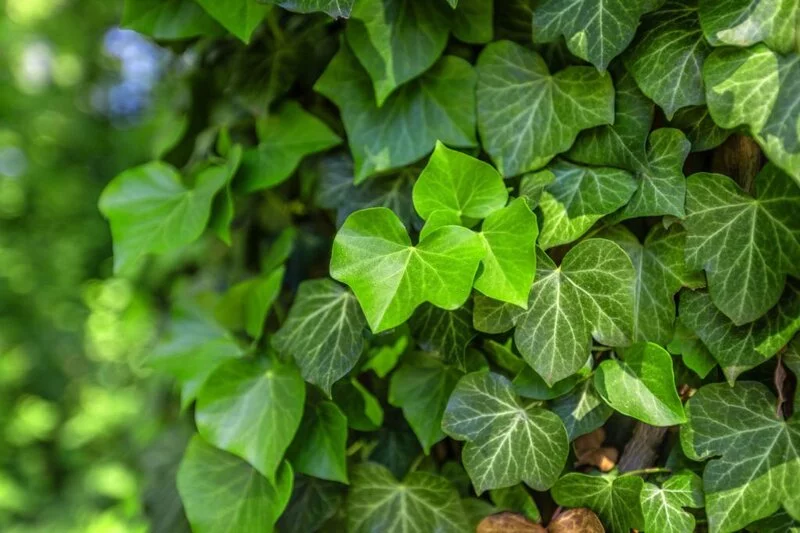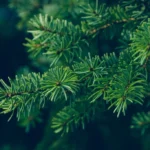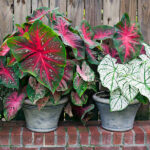Hello, fellow plant lovers! Are you a proud owner of an ivy plant, or perhaps you’re considering adding this leafy green beauty to your indoor garden? Ivy, with its cascading trails of heart-shaped leaves, is a favorite among houseplant enthusiasts. It’s not just about its good looks, though. Ivy is well-loved for its resilience and adaptability, making it an excellent choice for both beginner and experienced gardeners.
But even the hardiest plants can run into trouble, and ivy is no exception. One common issue that many ivy owners face is yellowing leaves. It can be quite disheartening to see your once vibrant and healthy ivy take on a sickly yellow color. But don’t fret just yet! This guide is here to help you understand why your ivy might be turning yellow and how you can restore it to its former green glory.
- PLANT FOOD FOR INDOOR PLANTS: Big Green Leaves treats over 44 gallons of water at full strength. Promotes fuller, greener leaves and vigorous growth. Supports resilience from root to stem to leaf.
- BETTER THAN LIQUID FERTILIZERS, SPIKES, AND TABLETS. Most houseplant fertilizers only provide 3 basic minerals. Big Green Leaves is loaded with essential superfood nutrients (minerals, vitamins, amino acids, organic biological compounds, and antioxidants). A concentrated 12-4-8 NPK plus organically-bonded micro-nutrients (magnesium, boron, iron, copper, manganese), and botanical sea kelp.
- EASY APPLICATION. Pre-measured scoop included. Mix 2 scoops (tsp) per gallon of water. Use for watering every 7-14 days during the growing season. (100% water soluble instant feed). Resealable bag for clean, dry storage that will outlast any liquid plant food.
- GENTLE & SAFE FOR CONSTANT USE. Fertilize during the grow season and winter. Urea free formula won’t burn your plants.
- VERSATILE. Use as a soil drench, foliar feed, or hydroponic. Ideal for potted indoor houseplants, grow bags, soilless media, LECA, potting soil, & container gardens. Also great for accelerating plant propagations.
Normal Ivy Growth
Before we delve into the causes of yellowing leaves, it’s essential to understand what healthy ivy looks like. Ivy plants are characterized by their lush, trailing vines adorned with small, heart-shaped leaves. The leaves are usually a vibrant green color, although this can vary depending on the variety of ivy you have. Some types of ivy might have variegated leaves that are green and white or even green and yellow.
It’s also worth noting that ivy leaves naturally age and will eventually turn yellow and fall off as part of the plant’s growth cycle. This is perfectly normal and not a cause for concern. If only a few leaves are yellowing and they’re at the bottom of the plant, your ivy might just be shedding some old foliage. However, if the yellowing is widespread or the plant appears unhealthy, it’s time to play plant detective and figure out what’s going wrong.
Causes of Yellowing Leaves in Ivy
If your ivy is sporting a yellow look, a few different things could be going on. Here’s a simple rundown of the most common causes:
- Watering Woes: Both overwatering and underwatering can cause your ivy’s leaves to turn yellow. Ivy doesn’t like to have its feet wet all the time, but it also doesn’t appreciate being too dry.
- Light Trouble: While ivy can tolerate low light, too little light can make the leaves turn yellow. On the other hand, too much direct sunlight can scorch the leaves and cause yellow patches.
- Missing Nutrients: Ivy plants need a range of nutrients to stay healthy. If they’re not getting what they need from the soil, the leaves can start to yellow.
- Unwanted Pests: Pests like spider mites, aphids, or scale can stress your plant and cause yellowing leaves.
- Temperature and Humidity: Ivy prefers cooler temperatures and higher humidity. If conditions are too hot or too dry, the plant can show its discontent by turning yellow.
- Pamper your houseplants with Miracle-Gro Indoor Potting Mix and Miracle-Gro Indoor Plant Food
- The 6-qt. bag of potting soil has been blended for a wide variety of container plants and is designed to be less prone to gnats (contains no compost or bark, which are known to shelter fungus gnats)
- This potting mix has an easy-to-water formula that helps the soil easily re-wet
- Instantly feed all indoor houseplants, including edibles, with this 8-oz. liquid plant food
- This bundle includes one 6 qt. bag of Miracle-Gro Indoor Potting Mix and one 8 fl. oz. bottle of Miracle-Gro Indoor Plant Food
How to Treat Yellow Leaves in Ivy
Now that we know why your ivy might be turning yellow let’s talk about how to fix it:
- Adjusting Watering: If you suspect overwatering or underwatering is the problem, adjust your watering schedule. Ivy prefers to dry out a bit between waterings. Stick your finger about an inch into the soil. If it’s dry, it’s time to water. But remember, don’t let it sit in water! Drain any excess from the saucer underneath.
- Light Conditions: If your plant isn’t getting enough light, move it to a brighter location. But be careful about too much direct sunlight. If the plant is getting scorched, consider moving it back a bit from the window or providing some shade.
- Providing Nutrients: Use a balanced, slow-release fertilizer during the growing season to provide all the nutrients your ivy needs.
- Pest Control: If pests are the problem, remove them with a gentle blast of water or a soapy water mixture. In severe cases, you might need to use a pesticide.
- Temperature and Humidity: Keep your ivy in a cooler spot, out of direct heat sources like radiators. And to increase humidity, consider using a pebble tray or a room humidifier, or grouping plants together.
Remember, yellow leaves won’t turn green again, but fixing the problem will help new growth stay healthy and vibrant.
Prevention and Ongoing Care for Ivy Plants
Prevention, as they say, is better than cure. With a few simple ongoing care tips, you can keep your ivy plant happy and prevent yellow leaves from making an unwanted appearance:
- Consistent Watering: Remember the finger test we talked about? Keep that up! Regularly check your ivy’s soil and only water when necessary to prevent both overwatering and underwatering.
- Light Conditions: Find the right spot for your ivy. Bright, indirect light usually works best. If you notice your plant’s color fading, it might be a sign that it needs a little more light.
- Regular Feeding: Feed your ivy with a balanced plant fertilizer during its growing season (spring and summer) to ensure it’s getting all the nutrients it needs.
- Pest Checks: Regularly check your plant for pests. Catching a pest infestation early can make treatment much more manageable.
- Suitable Environment: Keep your ivy in a cool, humid environment. If your home tends to be dry, consider getting a plant humidifier or grouping your plants together to create a mini indoor jungle.
Conclusion
And there you have it, folks! Dealing with a yellowing ivy plant might seem daunting, but armed with a little know-how, you can diagnose the problem and nurse your plant back to health. Ivy is a resilient plant, and with your care and attention, it will bounce back in no time. Happy planting, and remember, every plant owner faces some green challenges – they’re just opportunities for you to grow along with your plants!






